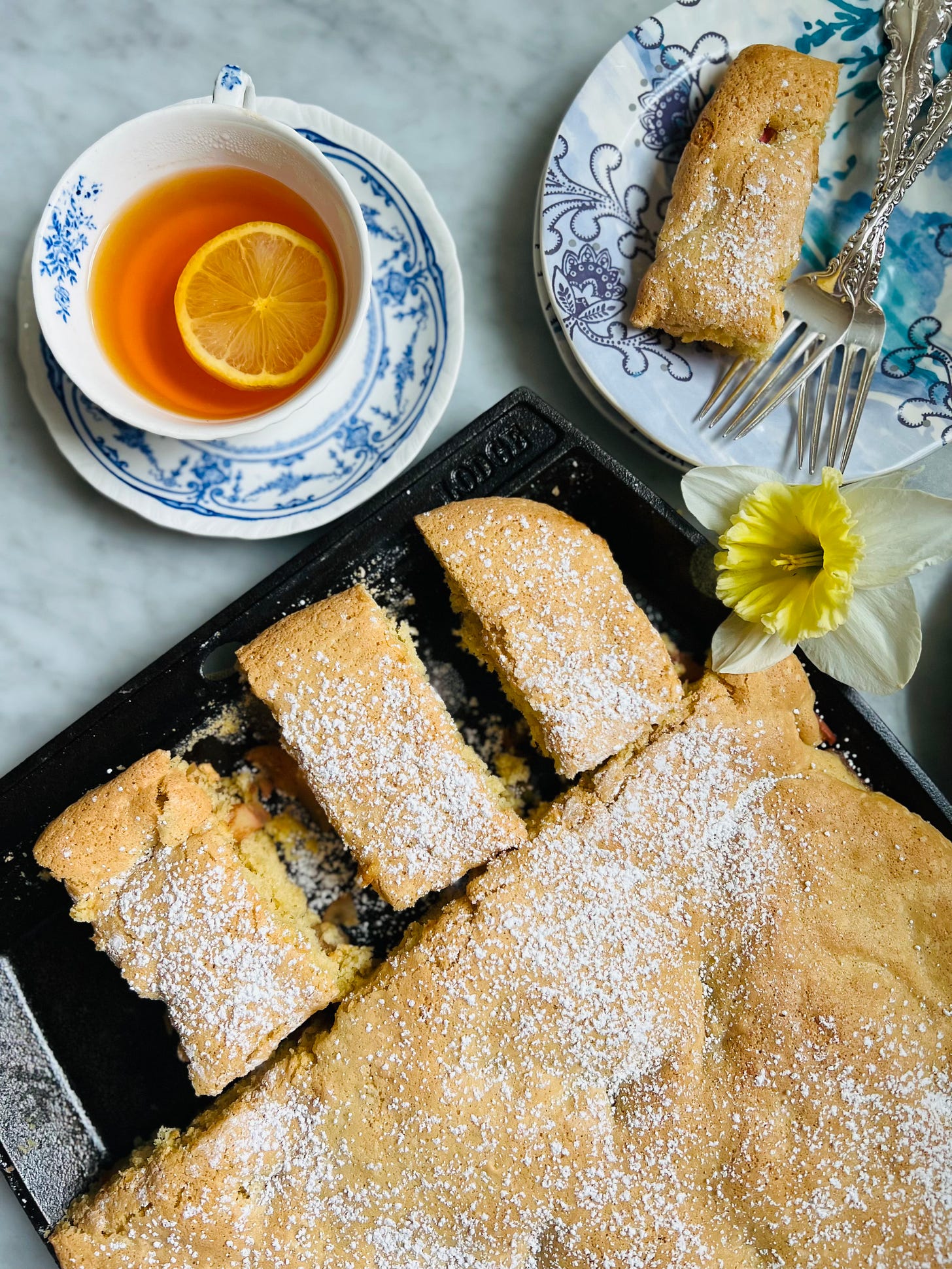Cake in Other Places: Ukraine - No. 193
One year later, Apple Sponge Cake, and a deeper meaning of baking without butter.
LAST FALL I DECIDED TO WRITE about one of my favorite subjects—cake—in a less familiar way. Why not step out of the comfort zone every once in a while?
I interviewed Aleksandra Crapanzano about cake in France. She had been raised in Paris and New York and had just written Gateau, a book about French cakes, from fancy to everyday. I zeroed in on a beloved yogurt cake so ingrained in French culture that schoolchildren learn to make it in nursery school.
Today, I tackle a more difficult subject, cake in Ukraine, which is not so fanciful as measuring with little yogurt jars. It’s more about baking without.
A year ago tomorrow the world watched Russian tanks roll into Ukraine. In 365 days, we’ve seen buildings bombed, civilians massacred, families torn apart, and millions displaced. The sacrifice of the Ukrainian people, the open arms of their western neighbors, and the resolve of their president have moved us.
To bring attention to Ukraine, in March last year, I baked lemon poppy seed cake and roasted cabbage as Ukrainian author Olia Hercules suggested in her cookbook, Mamushka. For my family I marinated chicken as she does in kefir and tons of fresh herbs and garlic, and grilled it. So delicious. But I hadn’t baked her apple cake. And I needed to.
It’s not that we’ve forgotten Ukraine, but we tend to have a short attention span. With the births, weddings, deaths, and graduations in our own world, it’s easy to forget what’s happening a world away in a war zone.
Baking is often not about what you have, but what you don’t.
You’ll find hot milk sponge cake in American, British, and Canadian baking books, where you beat the eggs and sugar, and meanwhile a pot of milk and butter is warming to add alternately with the flour. But sponge cakes don’t always contain butter and milk. In their simplest form, they are a foam of eggs and sugar, with the addition of flour at the end.
And in the oven the sponge cake performs differently, too. Without butter, it is light but not rich. And without leavening, it relies on the air you incorporate by beating the eggs and sugar together to help the cake rise to lightness.
Reading Olia’s stories, I learn eggs were a commodity that Ukrainian families had access to, especially in rural areas. But not butter.
‘’In Soviet Ukraine there was a perpetual credit crunch, so we got used to using margarine.’’
She suggests apologetically in the prelude to a cookie recipe that you should use butter instead of the margarine she calls for. And I wonder now as a celebrated London food writer who has labored extensively to get her family safely out of Ukraine and to send money back to those who can’t or won’t leave, if she feels conflicted writing margarine-infused recipes for the world to see. I hope she doesn’t because margarine is a part of her story.
The sunflowers that painted the fields bright yellow before the war have produced the seeds that have made the oil that have been turned into margarine. It has stepped in as a cheap substitute for butter all its life. And it’s no flavor match, for certain, but I’m old enough to see it in recipes and not judge. Every one of us has family recipes coming out of the 1930s that might just contain oleo, back when it was packaged with the dye to color it yellow.
To me, margarine in Ukrainian recipes is complicated. It says Soviet rule, rationing, and precarious economic times.





